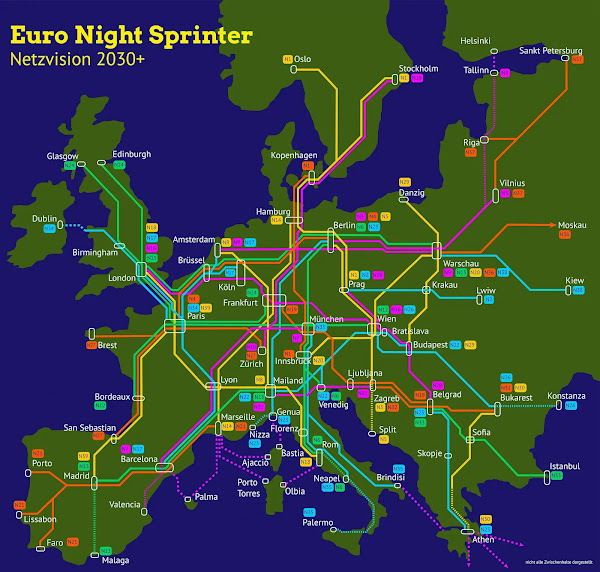Imagine a network of modern, super-fast and comfortable trains hurtling between every major city in the European Union, providing a reliable, comfortable and sustainable alternative to air travel.
That was the vision outlined by rail industry leaders in Lyon, France, on June 29, amid ambitious European plans to double high-speed rail use by 2030 and triple current levels by 2050.
Only a massive – and accelerated – expansion of the high-speed network can achieve these hugely ambitious targets, but are they a realistic and affordable proposition?
According to EU statistics, 17 of the 20 busiest air routes in Europe cover distances of less than 434 miles (700 kilometers) – exactly the kind of distances where city center-to-city center trains can offer faster, cleaner and more sustainable journeys – if the right infrastructure exists.
A Paris-Berlin flight generates at least six times the carbon dioxide emissions of a similar train journey, according to a joint report from environmental organizations in Germany, Poland, Spain and France. Flights of less than 621 miles (1,000 kilometers) between and within European countries are estimated to create 28 million metric tonnes of CO2 every year.
Ben Jones
Besides the reduction in carbon dioxide emissions, an extensive, reliable, and well-integrated European high-speed rail network would have other benefits, improving for instance logistics across the continent. 2022 has been a recurring lesson in the importance of resilient supply chains, which were hit both by geopolitical factors (the war in Ukraine) and climate disruptions (the persistent drought draining rivers and diminishing shipping volumes). A pan-European rail network could supplement and act as a backup for existing transportation infrastructure, reducing the impact of similar issues – or, in the more serious case of military conflict, could be used to relocate troops and military equipment.
Naturally, there are numerous challenges to overcome, from coordinating investment and systems integration across multiple countries and companies, to dealing with terrain by digging tunnels and building bridges to facilitate faster and more direct routes. Another factor to consider is public perception and adoption. While Germany’s experiment this summer with a flat rate for rail travel has shown positive results, it probably hasn’t convinced many to replace their cars and airplane travel with train rides – after all, smaller prices lead to increased demand, so it’s possible that people are simply travelling more. The German government has since extended the policy for next year with a €49 monthly public transport pass, which should encourage further adoption in coming years.
Measured by its popularity, the programme has been a huge success. Thirty-one million people bought the card in its first month alone. The number of train trips longer than 30 kilometres in July was 42% higher than the same month in 2019, before the pandemic began, according to the German national statistics office Destatis. In rural areas popular with tourists, the number of trips rose by an average of 80%. The highest rise was in middle-distance trips between 30km and 100km, which doubled.
Dave Keating
It’s been an opportunity for regions where people otherwise wouldn’t have gone, says Jon Worth, a transport and politics blogger based in Berlin.It’s been a boom for tourism out in the countryside. But has it done what was the stated aim at the beginning, which was to get people to use cars less and use public transport more? There the data is questionable.
Personally, I welcome the alternative of railways connecting the countries of Europe, but I think they will prove most effective for shorter trips and for streamlining logistics. While competitive on multiple routes, trains remain less flexible than cars and more limited than airplanes by range and speed. Those accustomed to driving in their personal car on already established highways networks are unlikely to be persuaded to switch to trains, except maybe by persistently high gas prices. And when you’re travelling over longer distances or to an island destination (or for short business trips, or for quick city breaks, etc.), flying remains the better (sometimes only) choice.

Living in Bucharest, I am separated from destinations in Western and Northern Europe not only by distance, but by the arc of the Carpathian mountains as well. I don’t harbor much hope that the Romanian government will manage large-scale mega-investment projects to construct several tunnels or bridges through the mountains connecting us to the rest of the continent by high-speed rail. Even on the European level, I doubt we’ll see the kind of bullet trains currently being demoed in China – but only time will tell.
Post a Comment